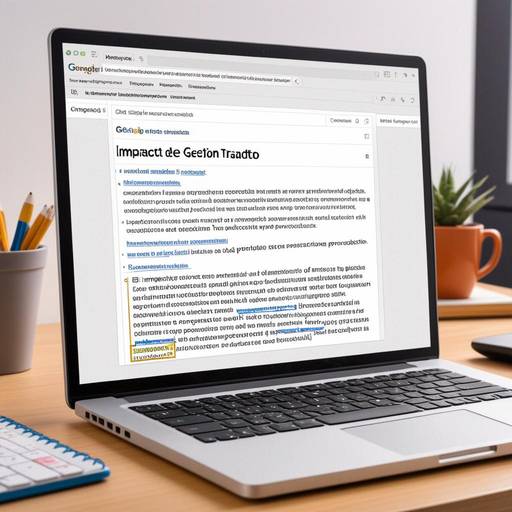
In an accelerated world where time is a valuable resource, time management has become an indispensable capacity to achieve success in any sphere of life. The Pomodoro technique, created by Francesco Cirillo in the 1980s, has gained popularity for its effectiveness in improving productivity and concentration. However, combining this technique with other time management strategies can further enhance its benefits and provide greater flexibility to meet individual needs. In this article we will explore how to combine Pomodoro with other time management techniques to maximize productivity and personal organization.
Introduction
Effective time management is crucial to achieving a balance between work, leisure and personal well-being. We often face multiple tasks and commitments, which can be overwhelming if we don't have an effective organizational system. In this context, the Pomodoro technique has proven to be a valuable tool dividing time into more manageable blocks, alternating concentrated working periods with short breaks. However, by combining it with other techniques, we can optimize its usefulness and adapt it to our individual needs.
History and background
We begin by exploring the origin and evolution of Pomodoro technique, as well as its impact on time management over the years. From his conception of Francesco Cirillo in the 1980s to his adoption by professionals and students from around the world, the Pomodoro technique has evolved and integrated into various productivity and time management approaches.
Article on the history of Pomodoro technique. More information
In-depth analysis
By combining Pomodoro technique with other strategies such as the Eisenhower matrix, the GTD technique (Getting Things Done) or the 80/20 rule, we can more effectively address task prioritization, project management and stress reduction associated with overload work. In addition, we will analyze the advantages and challenges of combining multiple techniques, as well as current trends in time management and individual and business productivity.
Article on the benefits of combining Pomodoro technique with other time management strategies. More information
Comprehensive review
We will examine specific applications of the combination of time management techniques through case studies and best practices recommended by productivity experts. Through a detailed analysis of various perspectives and opinions, we will give readers a complete understanding of how to improve their organization and personal productivity by combining techniques.
Article on practical applications and best practices of combining time management techniques. More information
Comparative analysis
By comparing the Pomodoro technique with other time management strategies, such as the ZTD (Zen to Done) method or the two-minute rule, we can identify similarities, differences and possible synergies. We will also provide detailed examples and application scenarios to illustrate the interaction between these techniques and how they can be complemented to achieve greater efficiency in personal organization and labour productivity.
Article that compares Pomodoro technique to other time management strategies. More information
Accessible practical advice and recommendations
We offer readers practical advice and practical recommendations to implement the combination of time management techniques in their daily lives. Through numbered lists and step-by-step guides, we will show you how to effectively integrate these strategies and adapt them to your individual needs to achieve optimal results in terms of productivity and personal organization.
Article on practical advice and recommendations for the implementation of the combination of time management techniques. More information
Industry perspectives and expert reviews
We will gather and present inputs from industry experts that will provide valuable information on future implications of the combination of time management techniques. In addition, we will analyse future trends and projections regarding productivity, personal organization and evolution of time management strategies in an evolving working environment.
Article on industry perspectives and expert opinions on the combination of time management techniques. More information
Case Studies and Real World Applications
We include detailed case studies showing practical applications of the combination of time management techniques in professional and personal environments. We will analyse the results and lessons learned to provide concrete examples of how these strategies can positively impact productivity and personal organization in different industries and contexts.
Article on case studies and real-world applications of the combination of time management techniques. More information
Future trends and predictions
Finally, we will discuss new trends related to the combination of time management techniques and offer future predictions based on current data and expert opinions. In addition, we will explore the potential challenges and opportunities that could arise as time management practices become a constantly developing business environment.
Article on future trends and predictions related to the combination of time management techniques. More information
Conclusion
In conclusion, the combination of Pomodoro technique with other time management strategies offers a comprehensive approach to optimize productivity and personal organization. Through this article, we have explored how the combination of techniques can provide greater flexibility and adaptability, as well as improve efficiency and overall well-being. By effectively implementing these strategies, people and organizations can maximize their potential and achieve a sustainable balance between work and personal life.
Frequently asked questions
1. Why is it beneficial to combine different time management techniques?
Combining different time management techniques allows you to adapt the approach to individual needs, address different types of tasks and maximize efficiency in personal organization and labor productivity.
2. How can I determine which combination of techniques is best suited to me?
Choosing techniques to combine will depend on your goals, preferences and working style. Experience with different combinations to find the one that best suits your needs and habits.
3. What are some of the possible limitations when combining time management techniques?
By combining techniques, it is important to maintain a balance to avoid overloading methods that could generate confusion or additional stress. In addition, some techniques may not be compatible with each other, so it is important to evaluate their interaction.
4. Can I combine Pomodoro technique with GTD technique?
Yes, the Pomodoro technique and the GTD technique (Getting Things Done) can be effectively combined to improve time management, concentration and productivity in general. The key is to adapt them to your specific needs and find a balance that works for you.
5. What are some recommendations to successfully implement the combination of time management techniques?
Some recommendations include setting periods of experimentation to test different combinations, adjusting techniques according to personal feedback and seeking expert or professional advice in time management.
6. How can I monitor my progress by combining time management techniques?
Monitoring your activities, achievements and challenges can provide valuable information on your progress by combining time management techniques. In addition, the use of monitoring and analysis tools, such as time management applications or project tracking methodologies, can provide a clearer view of their areas of performance and improvement.
Conclusion:
In short, the combination of Pomodoro technique with other time management techniques offers an adaptable and effective approach to improving productivity and achieving a better personal organization. By understanding the advantages, challenges and key considerations by combining techniques, people can optimize their time management approach and maximize their performance in different areas of their lives.
Since the importance of time management remains critical in an accelerated world, the ability to effectively combine techniques is increasingly relevant. By implementing a custom combination of time management strategies, people can achieve a sustainable balance between work, leisure and well-being, thus maximizing their potential and quality of life.






















































